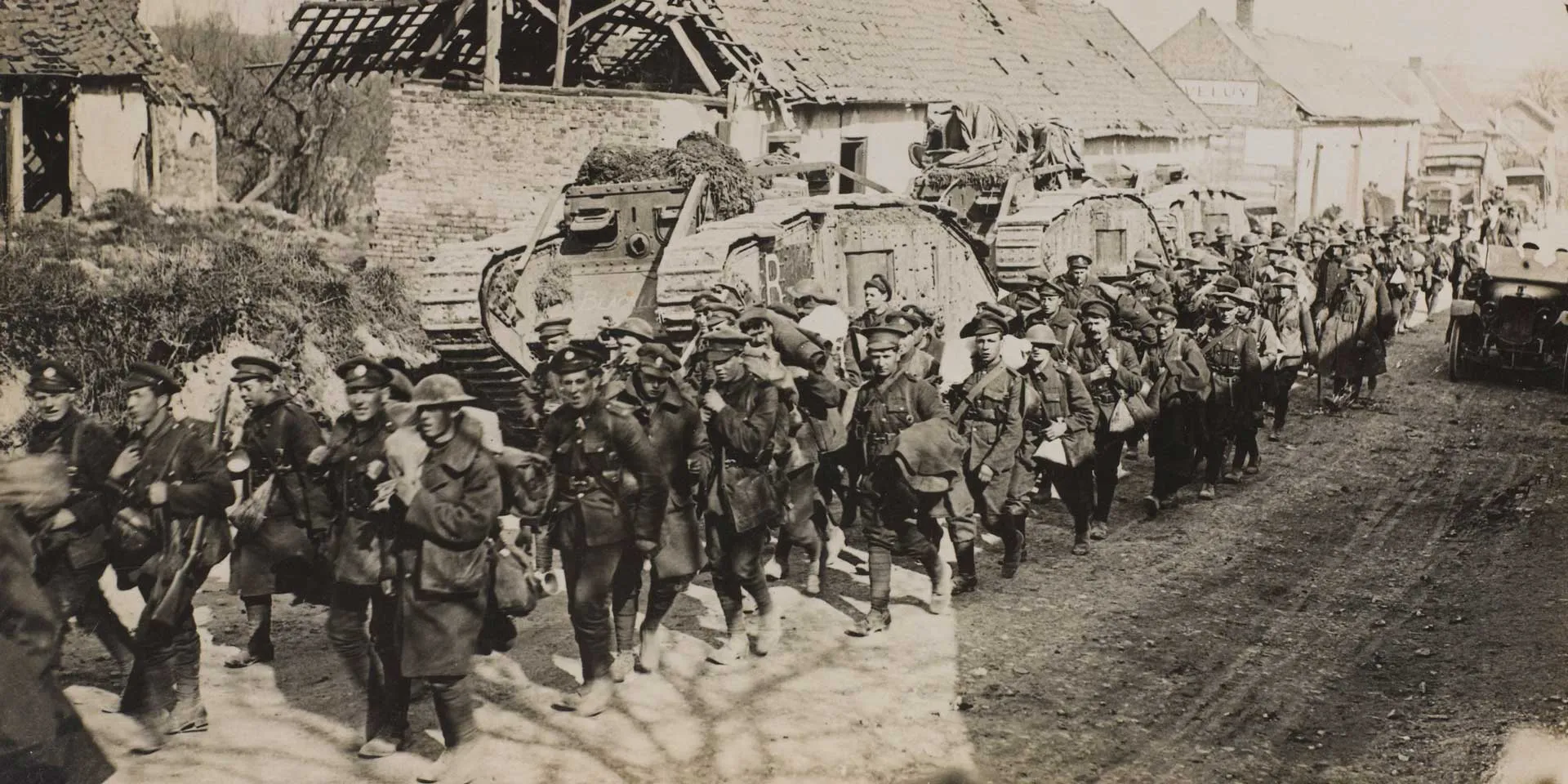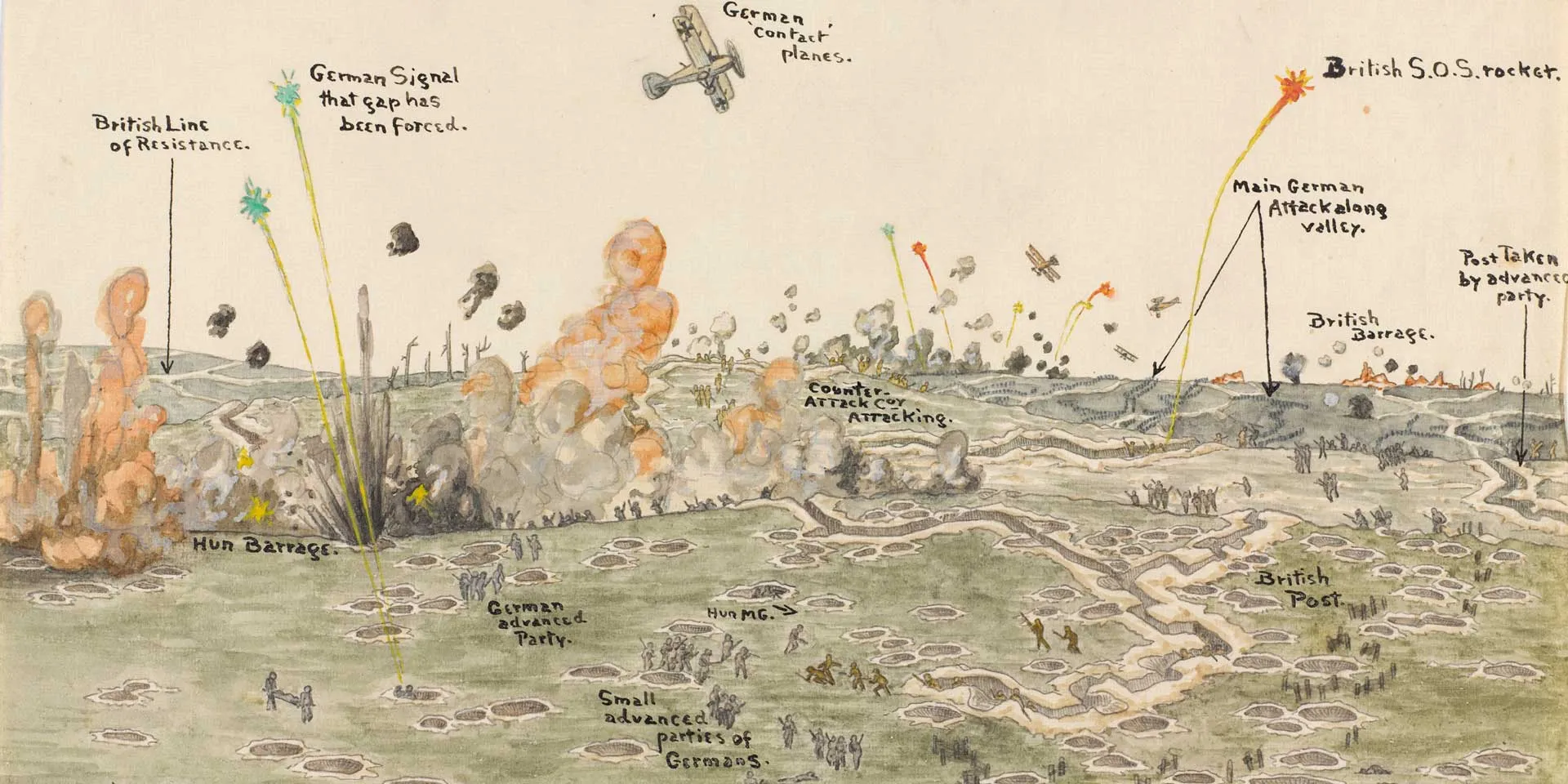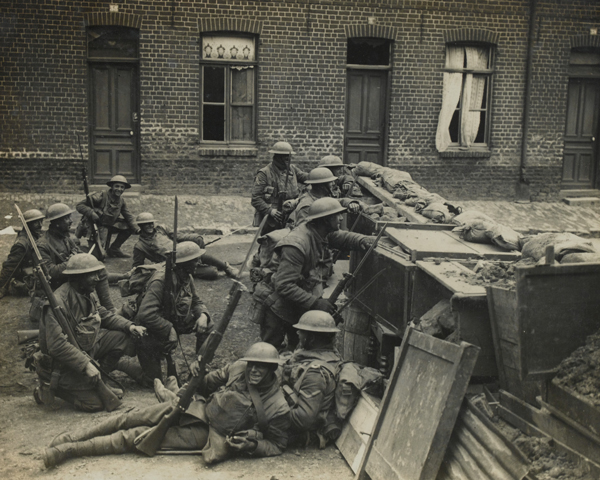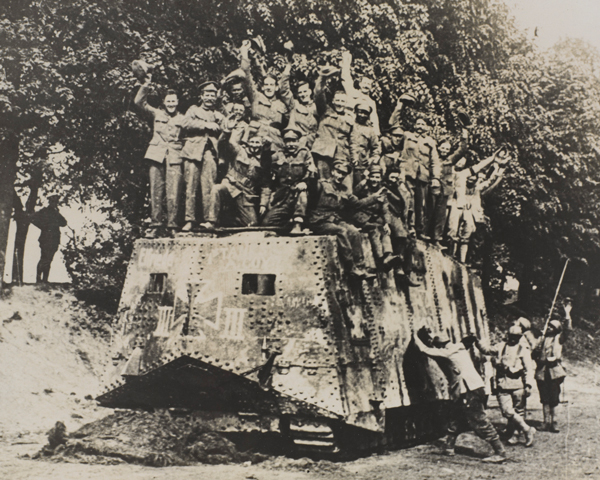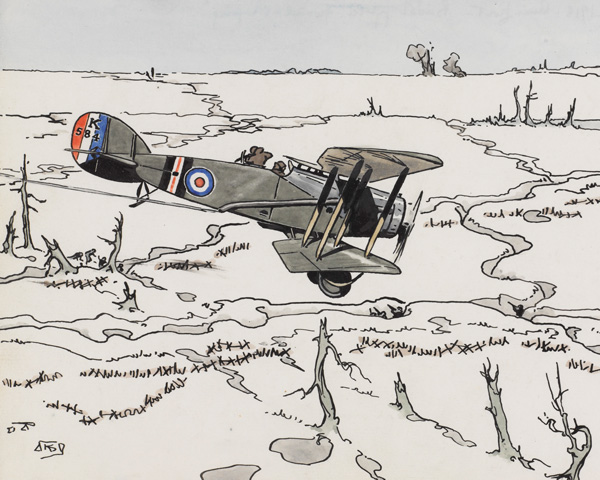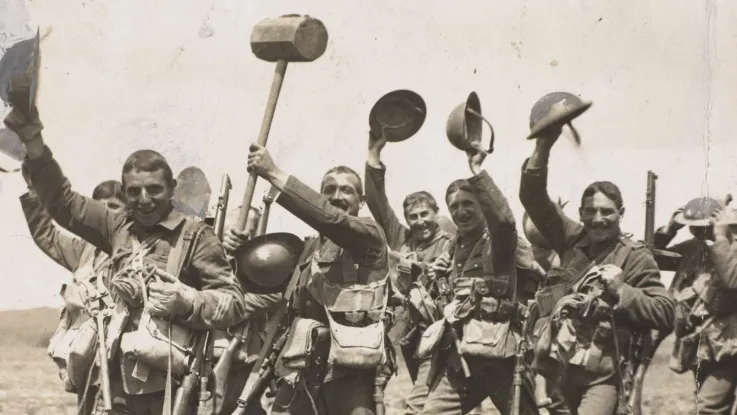Germany’s last gamble
The withdrawal of Russia from the war in 1917 released substantial numbers of German troops for use elsewhere. Aware that submarine warfare had failed to defeat Britain and that large numbers of American troops would soon be committed to the war, the Germans prepared for their final offensive in the west.
Field Marshal Haig’s British divisions were all under-strength in infantry. The government was unwilling to send more troops to the Western Front so Haig was forced to reduce the number of infantry battalions in his divisions from 12 to nine.
A weakened line
In mid-February 1918, 81 German divisions faced Haig’s 59 and for the first time in three years the British had to prepare to face a major attack. Haig could not afford to give ground near to the Channel coast, so the northern sector of his front was most heavily defended. Further south his forces were more thinly spread.
General Plumer’s Second Army, around Ypres, had to hold 37km (23 miles) of line with 14 divisions. Whereas, south of Cambrai, General Gough’s Fifth Army only had 14 divisions with which to hold 67km (42 miles).
Spring Offensive
On 21 March 1918, the Germans launched Operation Michael. Around 10,000 guns fired over a million shells in five hours against General Byng’s Third and General Gough’s Fifth Armies. Then, 47 German divisions attacked.
The intense 'hurricane' bombardments targeted artillery and machine-gun positions, headquarters, telephone exchanges, railways and communication centres. This undermined any chance of concerted British resistance.
Storm troops
Heavily armed German ‘storm troopers’ then infiltrated weak-points in the line. They by-passed pockets of resistance and broke through the British trench system, leaving subsequent waves of troops to ‘mop up’ any enemies to their rear.
Lacking reserves, Gough’s line soon gave way. By the evening of 23 March the Germans had advanced up to 19km (12 miles) in some sectors.
‘I stood up to see if I could find any sign of organised resistance and saw several men leaving their trench after being shelled and retiring… to be intercepted by military police and sent back at revolver point. MPs on the battlefield - it seemed incredible!’Lieutenant AW Bradbury — March 1918
Weakness
This early success belied the core weaknesses of the plan. The Germans were too exhausted to sustain the offensive and lacked the transport to convert local tactical triumphs into strategic victory. They struggled to move men, supplies and guns across the shattered landscape of the Western Front.
But, in the first few days, panic spread along some sections of the Allied front. It looked like the Germans might win a stunning victory.
‘One of our staff officers rode up on a horse and said, “Now men, I want you to stand firm on this hillside - you’ve got a good position you should be alright.” The men didn’t take any notice whatsoever, they began to stampede and said, “We’ve no chance, Sir, we’ve got no chance whatsoever, the Germans are coming.”’Private William Hall — March 1918
Huge losses
On 26 March, in exchange for reinforcements, Haig agreed to the appointment of France’s Marshal Foch as supreme commander on the Western Front. Although the Germans had advanced as much as 64km (40 miles), by 5 April their advance began to run out of steam and they were held east of Amiens.
Total British losses were 178,000 men. The French, who became engaged as the battle developed, lost 77,000 and the Germans 240,000.
‘There is no other course open to us but to fight it out. Every position must be held to the last man: there must be no retirement. With our backs to the wall and believing in the justice of our cause each one of us must fight on to the end. The safety of our homes and the freedom of mankind alike depend upon the conduct of each one of us at this critical moment.’Field Marshal Haig’s Special Order of the Day — 11 April 1918
Offensives held
On 7 April the Germans tried again with a smaller offensive south of Ypres. Operation Georgette captured the Messines ridge and much of the Passchendaele salient. Once again the German attack lost momentum.
Although they tested the French with a series of offensives further south between 27 May and 17 July, the Germans had shot their bolt. German morale began to crumble and on 18 July the French launched a counter-attack on the Marne, forcing the Germans back.
All arms
Germany’s attempt to break through had exhausted its army and the initiative passed back to the Allies. On 8 August, General Rawlinson’s Fourth Army launched a major attack at Amiens against the vulnerable salient created by the German offensive.
Rawlinson used over 2,000 guns, 450 tanks and 1,900 aeroplanes to support the attack by 13 divisions. The subsequent Battle of Amiens illustrated that the British had learned how to combine infantry, artillery, tanks and aircraft in a co-ordinated ‘all arms’ attack.
Black Day
This time it was the German front that broke. By the end of the advance, a gap of 24km (15 miles) had been punched in the German line south of the Somme.
The Fourth Army had taken 13,000 prisoners and over 300 guns. Total German losses were estimated to be 30,000 on 8 August. The Allies suffered about 6,500 killed, wounded and missing.
It was the first time that such large-scale capitulations had occurred. The German Commander-in-Chief, General Ludendorff, called it 'the black day of the German Army' due to the collapse in morale. Both Ludendorff and the Kaiser now concluded in private that Germany could no longer win the war.
Hundred Days
Amiens began the period known as the ‘Hundred Days’, a series of offensives along the line, which drove the Germans back. Much use was made of the Australian and Canadian Corps in these attacks.
On 26 September, the British broke through the Hindenburg Line and on 29 September they successfully crossed the St Quentin Canal. Nevertheless, parts of the German Army continued to fight ferociously and Allied casualties remained very heavy.
During the next two months, the Allies continued to pursue the Germans. Under relentless pressure, they were forced to sue for peace.
Victory
At 5am on 11 November 1918, the Allies signed an armistice with Germany in a railroad carriage at Compiègne in France.
At 11am that day, the ceasefire came into effect, finally ending the war. For the first time in its history the British Army had taken on and defeated the main body of the main enemy in a European war.
When the armistice was announced, the British were back at Mons where they had first been engaged at the start of the war in 1914.
Peace came at a huge cost. The mobile warfare since March had cost each side over a million men. 1918 was the most costly year of warfare on the Western Front.
‘Entering a village as we followed behind the Brigade, our drums struck up the “Marseillaise”. The populace became wildly excited, not having heard their National Anthem for a long time. An old man wearing an old fashioned night cap opened a window and leant so far forward, cheering and waving his arms that one feared he might topple out.’Lance-Corporal Frederick Legge — 11 November 1918

